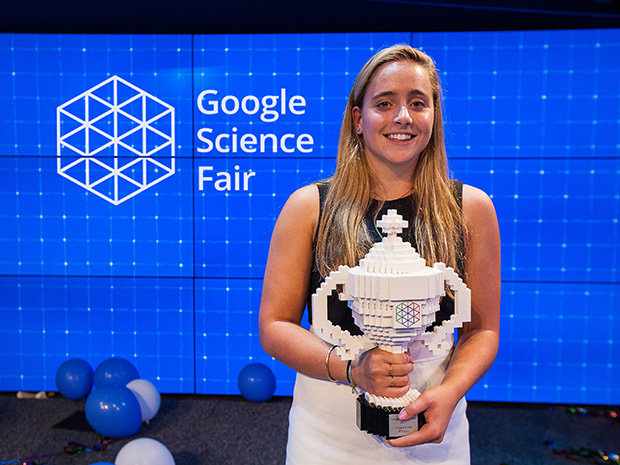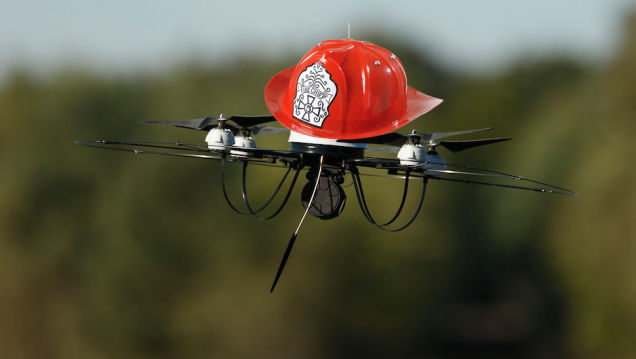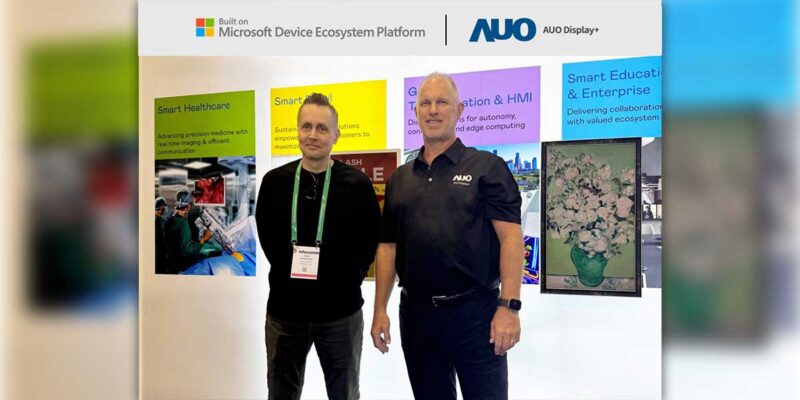Convergent TechWeek 10/2
A High School Student, An Inexpensive Ebola Test and a $50,000 Grand Prize
A science fair took place where 20 finalists’ projects – originally selected from thousands of submissions from more than 100 countries – came from 11 countries: Bosnia, Canada, France, India, Lithuania, Russia, Singapore, Taiwan, the United Kingdom, and the United States. This was no ordinary school science fair though – it was the Google Science Fair.
Olivia Hallisey, a junior at Greenwich High School in Connecticut, became interested in Ebola during the 2014 outbreak when she heard about the devastating impacts of the epidemic, which killed more than 11,000 people in various countries. When she learned that current tests for Ebola are expensive, complicated, time-consuming, and depend on temperature-controlled environments, she set out to develop something better. She developed a silk card which stabilizes substances that react to Ebola antigens known as reagents, which eliminates the need for refrigeration. Patients can get results in just 30 minutes.
With this, Hallisey was selected to receive the Google Science Fair Grand Prize – a $50,000 scholarship.
It’s Hallisey’s hope that along with helping to curb infectious diseases across the globe, her success can also inspire girls to get involved in science and health fields. “I would just encourage girls just to try it in the beginning, remind them that they don’t have to feel naturally drawn or feel like they have a special talent for math or science,” she told CNBC, “but just really just look at something they are interested in and then think how to improve something or make it more enjoyable or relate it to their interests.”
The rapid tests costs $25.
IEEE Spectrum: Tech-Savvy Teens Take on Ebola, Heart Disease, and Alzheimers
takepart: A 17-Year-Old Develops Cheap Ebola Test, Wins $50,000, Plans to Change the World
The Google Science Fair website.
MIT Developing Firefighting Drones With Another Higher Ed Engineering Institution
Andrew Bennett, Associate Professor of Mechanical Engineering at Olin College, is leading a project to develop firefighting drones. Calling himself “a long-time robot geek,” Bennett has worked at his share of big names institutions – from MIT AUV Lab to Disney’s Imagineering to iRobot. When NASA approached some friends of his at Scientific Systems Company, they knew he was their man for the project. The project is a joint effort between Bennett and Jonathan How, Professor of Aeronautics and Astronautics at MIT.
Bennett gave some background, explaining, “Normally systems that track fires aren’t real-time. People will receive alerts and information about fires 12 to 24 hours after the fact. As a result, we end up playing catch up with forest fires.”
Once it’s completed, the team hopes to make firefighting more of a science and less of a guessing game. It’s important to note though that these drones won’t be putting out any fires on their own, rather they’ll be helping track fires so humans can efficiently extinguish the flames.
MIT and Olin College Are Bringing the Firefighting Drones http://t.co/FpJAs52pIj via @BostInno
— Helen Greiner (@helengreiner) September 26, 2015
Helen Greiner is an MIT alum, robot enthusiast, co-founder of iRobot (the Roomba company) and CEO of CyPhy Works – a manufacturer whose whose sole focus is creating aerial robots that empower people to tackle the problems of tomorrow. And as you can see in the Tweet, this is how I found the article. If you’re into drones and robots, she’s a must Follow – I did.
BostInno: MIT and Olin College Are Bringing the Firefighting Drones
Major Evidence the World May Care About
ICYMI: An announcement was made by NASA – here it is on Twitter:
Water! Strong evidence that liquid water flows on present-day Mars. Details: http://t.co/0MW11SANwL #MarsAnnouncement pic.twitter.com/JNksawz2iN
— NASA (@NASA) September 28, 2015
You most likely already know (unless you don’t follow the news or social media) that new research from NASA “strongly supports” the belief that there is liquid water flowing on Mars, either on the surface or just below it. The new evidence comes from taking a closer look at recurring slope lineae (RSL): streaks of something that appear on the slopes of Mars craters in the warmer months and follow flow patterns, like what you’d expect of water.

These streaks were first discovered in 2011 and researchers have long hypothesized that they could be caused by the flow of liquid water formed by salts soaking up the water vapor in the atmosphere (or melting the frozen surface water) and becoming liquid brine. But NASA didn’t have any strong evidence that this was what was happening — until now.
NASA researchers used the Compact Reconnaissance Imaging Spectrometer for Mars (CRISM) to measure the areas where the RSL appear and look for hydrated salts (salts that have absorbed water), according to a paper* published in Nature Geoscience. In every site they looked at, the RSL slopes also contained hydrated perchlorate salts (salts formed from perchlorate acid), “supporting a genetic connection between the two,” the paper reads. Conclusion according to NASA is that it is now highly likely these dark streaks are formed by salty, liquid water on Mars.
This animation simulates a fly-around look at one of the places on Mars where dark streaks advance down slopes during warm seasons, possibly involving liquid water. This site is within Hale Crater. The streaks are roughly the length of a football field.
And as many of us do know, Elon Musk will care very much about this…
Motherboard: NASA Has Strongest Evidence Yet That There’s Flowing Water on Mars
* Nature Geoscience paper: Spectral evidence for hydrated salts in recurring slope lineae on Mars
Why not… Red Planet Report
Microsoft’s First Major Server Application Running on Linux
It’s official: Microsoft has gone Ubuntu Linux announcing its first Linux-based software-as-a service offering, HDInsight – Microsoft’s big data Hadoop-on-Azure service. Microsoft has partnered with Canonical, Ubuntu’s parent company, and Hortonworks, a major developer of the Hadoop program – Hadoop enables distributed processing of big data over commodity server clusters and clouds. Together the three companies have made it possible to run HDInsight on Ubuntu on Microsoft’s Azure cloud.
“A key goal for both companies is to enable hybrid cloud computing,” said John Zannos, Canonical’s VP of Cloud Alliances and Ecosystem, enabling “the choice of on-premise or on-cloud computing for enterprise customers, with large-scale deployments that span both private infrastructure and public infrastructure. Ubuntu is a key part of that strategy. There are more big data solutions on Ubuntu than any other platform. All of this means minimal effort for Ubuntu customers to run their existing on-premise analytics workloads on Azure HDInsight.”
On the Microsoft side, T.K. Ranga Rengarajan, corporate VP of databases and big data, said, “The general availability of Azure HDInsight on Ubuntu Linux … includes a service level agreement guarantee of 99.9% uptime and full technical support for the entire stack with the choice of running Hadoop workloads on Hortonworks Data Platform in Azure HDInsight using Ubuntu or Windows. There’s also a growing ecosystem of ISV’s delivering tools to create big data solutions on the Azure data platform with HDInsight.”
ZDNet: Microsoft deploys first major server application on Ubuntu Linux
WinBeta: Azure’s big data services expand, now include HDInsight on Linux
Compact Plug-and-Play Camera Adds Immersive “Being There” Video Experience
Altia Systems– a Gartner Inc. 2015 Cool Vendor in Unified Communications – will demonstrate its PanaCast 2, the world’s first Panoramic-4K Plug-and-Play USB video camera, next week at the Gartner Symposium/ITxpo 2015 in Orlando, FL. With its 180°-wide, 54°-tall field of view and Panoramic-4K resolution (3840 x 1080), PanaCast 2 delivers exceptionally clear video with a human visual perspective, developed to help people in web meetings collaborate more effectively, thereby improving productivity.
The product plugs into a computer’s USB port and works with popular collaboration applications including Microsoft Skype for Business, Cisco WebEx, Google Hangouts and more – without requiring installation of any drivers or software.
 PanaCast 2 provides users with a natural looking panoramic video from as close as 3 feet.
PanaCast 2 provides users with a natural looking panoramic video from as close as 3 feet.
Business Wire: Altia Systems® to Demonstrate PanaCast® 2, World’s First Panoramic-4K Real Time Video Camera
PanaCast: The Technology Inside PanaCast® 2 – World’s First Panoramic-4K Camera
#PrettyCurious Campaign Hopes to Encourage Girls to Look at STEM Careers
A UK-wide campaign is being launched to inspire teenage girls to pursue science-based careers after new research revealed how a third don’t think they are clever enough for such jobs.
Only 1 in 7 UK STEM workers are female – we're serious about changing that http://t.co/wjAgyzup7b #PrettyCurious pic.twitter.com/ufqQLCatBL
— EDF Energy (@edfenergy) October 1, 2015
EDF Energy polled* over 2,100 pupils aged between 11 and 16 to find 32 per cent of young girls don’t think they have the smarts to become a scientist – despite the subject being one of their most-enjoyed (28 per cent) and incurring the best performance rate in at school (38 per cent) in the last academic year. The energy provider is keen on altering perceptions and has begun the #PrettyCurious program to introduce teenage girls to role models they can identify with:
- Liz Bonnin: biochemist, wild animal biologist, and TV presenter
- Jenny Griffiths: computer scientist and founder of fashion app SNAP Fashion
- Florence Adepoju: cosmetic scientist and founder of make-up brand MDMflow
- Bethany Thomas: reactor chemistry engineer with EDF Energy
Head of strategic resourcing at EDF Energy, Fiona Jackson, described how the new initiative will aim to inspire and help girls to improve their career options saying,“It’s part of a long-term commitment from EDF Energy to improve the ratio of women to men in the company, as well as inspire 100,000 young people into science.”
Independent: British girls don’t think they’re smart enough for science careers, says EDF Energy study
*Total sample size (according to the article) was 2,167 children aged 11 to 16, who were in Key Stage 3 or 4 in the last school year (2014/15). 1,127 were boys and 1,040 were girls.
Find out more about the Pretty Curious campaign.
(IoT) Gadget of the Week: A.I. for Everyone
The VAR Guy: Mycroft Promises Open Source, Linux-based AI for IoT World









